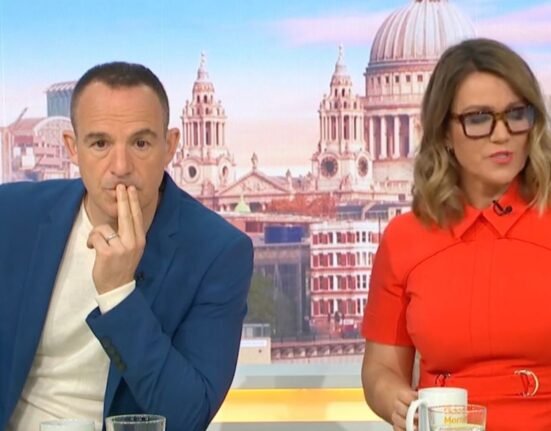“The tension between patents and trade dress protection is most evident when the alleged trade dress (or aspects thereof) has been disclosed in a utility patent.”
 Patents and trademarks protect distinct intellectual property rights. Utility patents protect “new and useful” inventions, which generally concern how a product functions. 35 U.S.C. § 101. Trademarks, by comparison, serve “to identify and distinguish [one’s] goods, . . . from those manufactured or sold by others and to indicate the source of the goods[.] 15 U.S.C. § 1127; Qualitex Co. v. Jacobson Prods. Co., 514 U.S. 159, 164-65 (1995). Unless registered, a trademark holder must affirmatively show that its trade dress is not functional. 15 U.S.C. § 1125(a)(3).
Patents and trademarks protect distinct intellectual property rights. Utility patents protect “new and useful” inventions, which generally concern how a product functions. 35 U.S.C. § 101. Trademarks, by comparison, serve “to identify and distinguish [one’s] goods, . . . from those manufactured or sold by others and to indicate the source of the goods[.] 15 U.S.C. § 1127; Qualitex Co. v. Jacobson Prods. Co., 514 U.S. 159, 164-65 (1995). Unless registered, a trademark holder must affirmatively show that its trade dress is not functional. 15 U.S.C. § 1125(a)(3).
The purpose behind the prohibition of functional trademarks is so that the trademark holder does not unfairly stifle legitimate competition by precluding its competitors from using functional aspects of that product in their own, competing products. TrafFix Devs., Inc. v. Marketing Displays, Inc., 523 U.S. 23, 29 (2001). The U.S. Supreme Court held more than 20 years ago a utility patent is strong evidence the features claimed within are functional, and, therefore, not protectable trade dress. Id. at 23 (concluding trade dress to “dual-spring” sign stand was functional because features of the design were claimed in an expired patent).
Trademark owners nonetheless can still protect non-functional aspects of products also covered by a utility patent, at least for the time being. The Supreme Court in TrafFix did not foreclose the possibility that ornamental or arbitrary elements of a product features could constitute protectable trade dress despite concurrent utility patent protection. Recent cases show some successes by trademark plaintiffs stating claims for trade dress infringement despite their product being disclosed in a utility patent, at least at the pleadings stage.
Non-Functional Product Features Can Be Protected by Trademark Law Despite the Existence of a Utility Patent
Trademark protection for products includes brand names and logos, and “trade dress”— the product’s “total image and overall appearance . . . includ[ing] features such as size, shape, color or color combinations, texture, graphics, or even particular sales techniques.” Two Pesos, Inc. v. Taco Cabana, Inc., 505 U.S. 763, 765 n.1 (1992) (cleaned up). The tension between patents and trade dress protection is most evident when the alleged trade dress (or aspects thereof) has been disclosed in a utility patent.
The recent district court decision in Abbott Labs. v. Revitalyte LLC, 744 F. Supp. 3d 894 (D. Minn. 2024) highlights this tension. There, the plaintiff Abbott was able to assert a plausible claim for trade dress protection for the packaging for its well-known Pedialyte product—which includes a rectangularly shaped plastic bottle with rounded corners and two ridges that run around the circumference of the bottle above and below its label, the bottle being clear to “reveal the bright colors of the various Pedialyte flavors.” Id. at 879 (cleaned up).

Abbott previously disclosed the bottle design in a utility patent.

Defendant Revitalyte argued the prior utility patent doomed the Pedialyte trade dress at the pleading stage. But the district court denied dismissal. The parties disputed significance of the utility patent disclosure: The Pedialyte bottle was shown in an embodiment, but not a preferred one, see Abbott Labs. v. Revitalyte LLC, No. 0:23-cv-1449-DWF-DTS, Dkt. 55 (D. Minn. Apr. 18, 2024) (Abbott’s Opposition Brief)). Abbott further asserted the preferred embodiment “look[ed] nothing like the Pedialyte bottle”:

Id. at 29-30 (citing Georgia-Pacific Consumer Products LP v. Kimberly-Clark Corp., 647 F.3d 723, 729 (7th Cir. 2011) (“[T]he consistency in language between the preferred embodiment and the claims is evidence of functionality.”)). These disputes—as to whether the bottle design was covered by the claims, and whether Pedialyte’s “total image and overall impression” contained aspects beyond the patent claims, id. at 36 (cleaned up)—would seem to create enough of a dispute to sustain Abbott’s trade dress allegations.
Despite an apparent dispute as to Abbott’s patent coverage, the Abbott Court’s decision rested on different grounds—Abbott’s allegations that improvements to the manufacturing process since 1993 have eliminated the need for “specialized packaging designs”—such as that for Pedialyte disclosed in the patent. Abbott, 744 F. Supp. 3d. at 901-02 (quotation marks omitted). Citing dicta from the Seventh Circuit, the court noted that “[W]hat was once functional may . . . later be ornamental. Passage of time diminishes a utility patent’s significance.” Georgia-Pac. Consumer Prods., 647 F.3d at 730 (cited in Pedialyte, 744 F. Supp. 3d at 901-02). In other words, the passage of time may render once functional aspects non-functional—and thus the proper subject of trade dress protection. While this “passage of time” argument has some force for the trademark plaintiff at the pleading stage, it is unclear how well it fares at the dispositive stage.
Losing Arguments
Other trade dress plaintiffs have been less successful sustaining a trade dress claim where the product is subject to concurrent patent protection. See, e.g., Schutte Bagclosures, Inc., v. Kwik Lok Corp., 193 F. Supp. 3d 245, 265–66 (S.D.N.Y. 2016) (finding bag closure functional when embodiment in utility patent looked “strikingly similar” to claimed trade dress), aff’d, 699 F. App’x 93 (2d Cir. 2017); ASICS Corp. v. Target Corp., 282 F. Supp. 2d 1020, 1026–31 (D. Minn. 2003) (denying preliminary injunction in trade dress case where claimed trade dress—the famous Asics shoe design—appeared in patent as embodiment of invention); Pocket Plus, LLC v. Pike Brands, LLC, 53 F.4th 425, 434 (8th Cir. 2022) (vertically-oriented pouch functional because design was essential to its use and affected quality of article—the fact that competitors made horizontally-oriented pouches did not make asserted trade dress non-functional); CTB, Inc. v. Hog Slat, Inc., 954 F.3d 647, 662 (4th Cir. 2020) (chicken feeder design functional based on expired utility patent—“Plaintiff’s twosided, L-shaped spokes serve the functional purpose of permitting chickens to exit the feeder easily. Whether or not a three-sided spoke, or some other alternative design, serves the same purpose does not render Plaintiff’s engineering-driven L-shaped spoke design arbitrary or non-functional.”); Groeneveld Transp. Efficiency, Inc. v Lubecore Int’l, Inc., 730 F.3d 494, 523 (6th Cir. 2013) (grease pump functional—“[T]he issue is not whether Lubecore could have designed a grease pump with a different appearance; the issue is whether Groeneveld’s design is essential to the use or purpose of the article or if it affects the cost or quality of the article.”) (internal quotation omitted); Georgia-Pacific Consumer Prods., 647 F.3d at 731 (embossed toilet paper design functional based on utility patents—“[T]he design in question does not have to be the only design to be functional . . . . [T]he fact that there are numerous alternative designs does not, on its own, render the design nonfunctional.”); Talking Rain Bev. Co. v. S. Beach Bev. Co., 349 F.3d 601, 604 (9th Cir. 2003) (bike bottle design functional—“Talking Rain argues that its trademark design is merely one of a number of possible designs for bike bottles. . . . But under the Supreme Court’s decision in TrafFix, the mere existence of alternatives does not render a product nonfunctional.”).
In dicta in TrafFix, Justice Kennedy stated that where a manufacturer seeks to protect arbitrary, incidental, or ornamental aspects of a product found in the claims of a patent, such as arbitrary curves in the legs or an ornamental pattern painted on the product, a manufacture “could perhaps prove those aspects do not serve a purpose within the terms of the utility patent.” 532 U.S. at 34. The statement was the subject of criticism. For instance, J. Thomas McCarthy commented that “non-functional elements should not appear and do not appear in patent claims.” See J. Thomas McCarthy, McCarthy on Trademarks § 7:89. Some courts have been inclined to adopt this view. ASICS Corp., 262 F. Supp. 2d at 1027 (citing McCarty).
Despite the seeming high standard for trade dress protection in a product associated with a utility patent, Abbott Labs. v. Revitalyte, shows that trademark owners will continue to pursue trade dress protection for products concurrently protected by patents until definitively precluded from doing so by binding precedent.
Image Source: Deposit Photos
Author: Rawpixel
Image ID: 102464346







